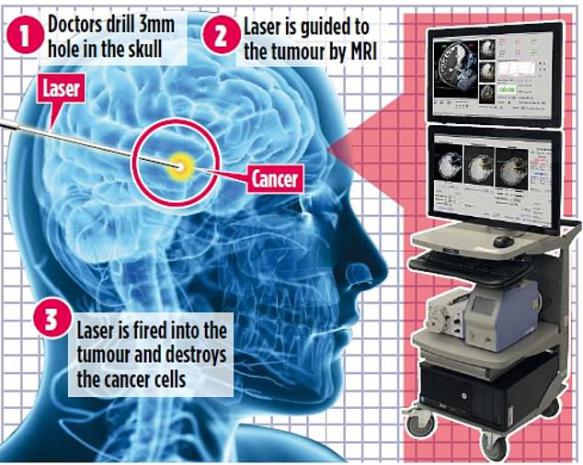
Breaking News
DRINK 1 CUP Before Bed for a Smaller Waist
 Nano-magnets may defeat bone cancer and help you heal
Nano-magnets may defeat bone cancer and help you heal
 Dan Bongino Officially Leaves FBI After One-Year Tenure, Says Time at the Bureau Was...
Dan Bongino Officially Leaves FBI After One-Year Tenure, Says Time at the Bureau Was...
 WATCH: Maduro Speaks as He's Perp Walked Through DEA Headquarters in New York
WATCH: Maduro Speaks as He's Perp Walked Through DEA Headquarters in New York
Top Tech News
 Laser weapons go mobile on US Army small vehicles
Laser weapons go mobile on US Army small vehicles
 EngineAI T800: Born to Disrupt! #EngineAI #robotics #newtechnology #newproduct
EngineAI T800: Born to Disrupt! #EngineAI #robotics #newtechnology #newproduct
 This Silicon Anode Breakthrough Could Mark A Turning Point For EV Batteries [Update]
This Silicon Anode Breakthrough Could Mark A Turning Point For EV Batteries [Update]
 Travel gadget promises to dry and iron your clothes – totally hands-free
Travel gadget promises to dry and iron your clothes – totally hands-free
 Perfect Aircrete, Kitchen Ingredients.
Perfect Aircrete, Kitchen Ingredients.
 Futuristic pixel-raising display lets you feel what's onscreen
Futuristic pixel-raising display lets you feel what's onscreen
 Cutting-Edge Facility Generates Pure Water and Hydrogen Fuel from Seawater for Mere Pennies
Cutting-Edge Facility Generates Pure Water and Hydrogen Fuel from Seawater for Mere Pennies
 This tiny dev board is packed with features for ambitious makers
This tiny dev board is packed with features for ambitious makers
 Scientists Discover Gel to Regrow Tooth Enamel
Scientists Discover Gel to Regrow Tooth Enamel
 Vitamin C and Dandelion Root Killing Cancer Cells -- as Former CDC Director Calls for COVID-19...
Vitamin C and Dandelion Root Killing Cancer Cells -- as Former CDC Director Calls for COVID-19...
Pioneering precision laser beam that zaps 'impossible to treat' brain tumours...

Father-of-one Pablo Casasbuenas, 36, had his aggressive and deep-seated tumour treated with the laser in October after being told he had only a year to live – and now says he is 'living life again'.
The procedure involves a fine narrow tube being inserted into the tumour before a laser is beamed down it, gradually heating up to about 70C, breaking down and killing the cancerous cells.
Real-time MRI images of the brain are sent to a computer screen, allowing surgeons to monitor where the laser is working.
Studies found that this pioneering laser procedure almost doubles survival time, from five to 11 months, for patients with inoperable brain tumours.
It also provides an alternative to aggressive chemotherapy or radiotherapy, which can further damage the sensitive brain tissues.
Hundreds of brain tumour patients are denied surgery every year because of the damage it can cause to surrounding healthy tissue. But the laser, called Visualase, is so precise that it can treat aggressive, hard-to-reach brain tumours with minimal damage. Often patients can go home the following day, compared to a ten-day hospital stay after conventional brain surgery.



